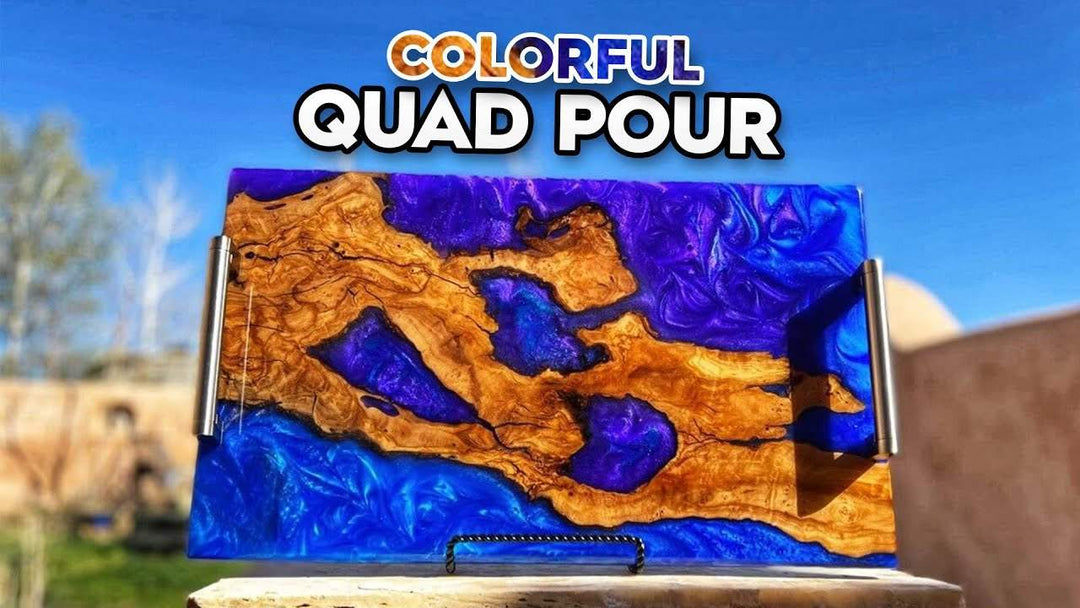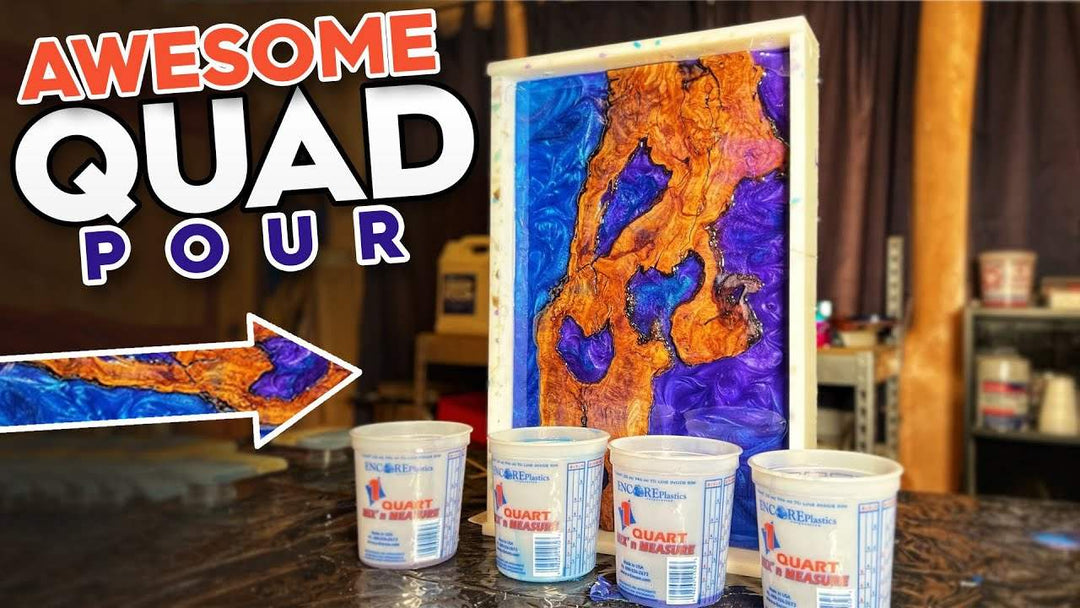
How to Achieve a Layered Epoxy Resin Effect
Looking for a perfect glossy flood coat with a ton of depth? Steve with Upstart Epoxy will show you the process of a two-stage depth pour, as well as discuss how long to wait between resin layers to achieve your desired effect This is a technique you should consider if you want your piece to have a multi-layered effect, or if you want to expose some of the wood/material while complimenting it with colored epoxy.
Skill Level: Beginner/Intermediate/Expert
Estimated Working Time: N/A
What You’ll Need:
How to Layer Resin
When layering resin, the first thing you should do is warm your table top epoxy before pouring it. We like to warm ours from anywhere from 30 to 45 minutes, just to make sure that Part A (resin) is nice and warm. Doing this makes it easier to stir your epoxy, because the warmth makes the viscosity a lot easier. Good viscosity gives you a cleaner pour, and less bubbles when you're ready to pour a flood coat. For today’s epoxy project, we decided to make some coasters.

How Long to Wait Between Resin Layers
Here’s how to layer resin - using deep pour epoxy, your first pour will be a colored one, where you’d use the powdered pigments set. We recommend leaving at least a ½-1 inch above in the colored coat, so that you’ll have room to pour a clear coat next. This will create a stunning glass effect that will allow you to look directly into the piece.
The next pour would be a clear one, that would be poured after the first one has dried and cured. A good rule of thumb when doing this coat is to have your workspace at a temperature between 70-80 degrees. When you’re at that targeted epoxy cure temperature range, a lot of the inevitable bubbles epoxy creates will pop naturally. This is especially important when doing a layered pour!
Keep your heat gun handy for this pour, because you’ll need to closely monitor it. You’ll want to take a close look after pouring and pop any bubbles that appear, and continue to do so until the project fully cures. This will ensure no micro-bubbles appear in your glass coat.
Once you pour that clear layer, it's going to give your project a really cool, glasslike 3D depth effect. That's EXACTLY what you go for when you're doing a two stage pour! You can do a pour like this that is full of color, or do it with a translucent and transparent finish.

Finishing Your Layered Resin Project
When layering resin, always sand your projects up to about 220-grit before a flood coat just to make sure it goes on evenly and smoothly. Don’t forget to sand off any drips on the underside! Be sure to wait until the epoxy cures to start sanding, which would be about 12-16 hours after your clear pour. Remember- even if you can touch your project without your fingers sticking to it, that doesn't mean that it's fully cured. We highly suggest waiting a full 24 hours to sand, just in case!
After we’ve sanded our coasters, we did a flood coat with our self leveling table top epoxy, taking it over the edges of the coasters with a gloved hand. Always make sure that everything is evenly distributed! If there’s any excess epoxy that overflows, put it back on to the surface of your project to prevent waste.
Don't worry too much if you run into a few bubbles. Table top epoxy is a lot thicker and has a lesser viscosity than deep pour epoxy, so that is typically what causes those bubbles. You can prevent them by mixing your tabletop epoxy by hand, which is more tedious but prevents more bubbles than usual in the long run.
That’s all folks! Everything you need to know about how to layer resin and make resin art. Once it’s cured, you’ve got a nice, multilayered project with a whole lot of depth. Try it out for yourselves! When you do, let us know which one you prefer- flood coats on single-stage pours or double-stage pours?





